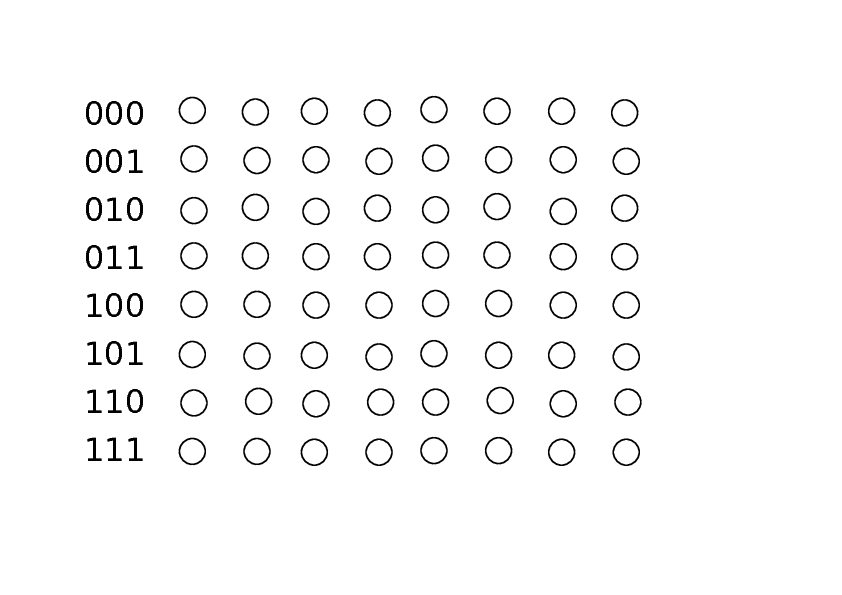 pmeerw's blog
pmeerw's blog
 pmeerw's blog
pmeerw's blog
A good online tutorial is Charan Langton's Coding and decoding with Convolutional Codes. (Fig. 10 seems incorrect, however, as three arrows go into one state.)
To visualize a Trellis on paper, I found the following useful:

Available as: .pdf and
.svg
Some code (test.cpp) using
the it++ library for C++ which illustrates the decoding example given in the tutotial:
// compile with
// g++ -Wall -o test test.cpp -litpp
// run with
// ./test
#include <cstdio>
#include <cassert>
#include <itpp/itbase.h>
#include <itpp/itcomm.h>
// example program, following http://www.complextoreal.com/convo.htm
int main() {
unsigned int invR = 2; // inverse rate
unsigned int m = 4; // memory
itpp::bvec u = "1 0 1 1 "; // input bits
std::cout << "uncoded: " << u << "\n";
itpp::Convolutional_Code cc;
itpp::BPSK bpsk;
itpp::ivec generators;
generators.set_size(invR, false);
generators(0) = 15; // polynomials
generators(1) = 13;
printf("constraint length %u\n", m-1);
cc.set_generator_polynomials(generators, m);
itpp::bvec coded_bits = cc.encode_tail(u);
std::cout << "coded: " << coded_bits << "\n";
itpp::vec symbols = bpsk.modulate_bits(coded_bits);
printf("symbols %d\n", symbols.size());
// channel here
itpp::vec received_symbols = symbols + 0.3*itpp::randn(symbols.size());
itpp::bvec decoded_bits = cc.decode_tail(received_symbols);
std::cout << "decoded: " << decoded_bits << "\n";
}
posted at: 17:59 | path: /academic | permanent link